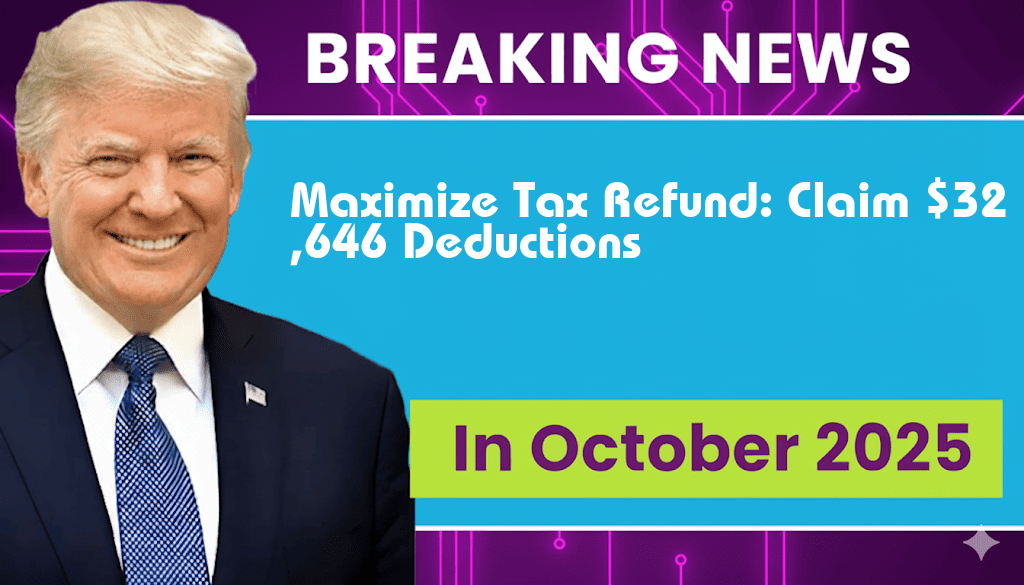

Unlock Savings of $3,752: Discover How This Major Tax Reform Benefits You
A recent overhaul of the U.S. tax code is poised to provide significant financial relief to millions of American taxpayers, with an average savings of $3,752 per household. The reform, which was enacted to simplify the tax process and stimulate economic growth, introduces a range of changes that affect income tax rates, deductions, and credits. As taxpayers prepare for the upcoming filing season, understanding the implications of this reform is essential. Whether you are a middle-income earner or a small business owner, these adjustments could mean substantial savings come tax time. This article explores the key components of the new tax law and how they may impact your bottom line.
Key Features of the Tax Reform
- Increased Standard Deduction: The standard deduction has been raised significantly, allowing more taxpayers to opt for this simpler filing method without itemizing their deductions.
- Lower Tax Rates: The reform includes reduced tax rates across several income brackets, designed to leave more money in taxpayers’ pockets.
- Expanded Tax Credits: Several existing tax credits have been enhanced, providing additional financial support for families, especially those with children.
- Elimination of Certain Deductions: While many deductions have been eliminated, the overall impact is expected to favor the majority of taxpayers.
Understanding the Impact on Your Taxes
To fully grasp how this reform may affect your tax situation, it’s beneficial to look at specific examples. The following table outlines the estimated changes in tax liability for various income levels:
| Income Level | Previous Tax Liability | New Tax Liability | Estimated Savings |
|---|---|---|---|
| $50,000 | $6,250 | $4,500 | $1,750 |
| $75,000 | $10,500 | $7,500 | $3,000 |
| $100,000 | $15,000 | $11,500 | $3,500 |
Who Benefits Most?
The reform primarily benefits middle-income earners, families with children, and small business owners. The increase in the standard deduction means that those who previously itemized their deductions may find that they no longer need to do so, simplifying their tax preparation. Additionally, the expansion of tax credits, such as the Child Tax Credit, provides further financial relief. These changes aim to reduce the tax burden on households, allowing families to allocate more of their earnings toward savings and investments.
Considerations for Small Business Owners
Small business owners stand to gain from the reform as well. The reduction of tax rates for pass-through entities, which include sole proprietorships and partnerships, incentivizes entrepreneurship and investment in local economies. Additionally, new deductions for qualified business income can help lower taxable income, further enhancing cash flow for small businesses. This renewed focus on supporting small enterprises is vital for economic recovery and job creation.
What You Need to Do Now
- Review Your Financial Situation: Take stock of your income, expenses, and potential deductions to estimate your tax liability under the new rules.
- Consult a Tax Professional: Given the complexities of the new tax law, seeking advice from a certified tax professional can ensure you maximize your savings.
- Stay Informed: Tax laws are subject to change; keeping informed through trusted sources like Forbes and the Wikipedia page on Tax Reform can provide updates and clarifications.
Conclusion
The recent tax reform marks a significant shift in how taxes are calculated and what deductions and credits are available to taxpayers. As millions prepare to file their taxes, understanding these changes is crucial for maximizing savings. With an average potential savings of $3,752, it is essential for all taxpayers to assess their situations and consult with professionals to take full advantage of the benefits offered by the new law.
Frequently Asked Questions
What is the major tax reform discussed in the article?
The article focuses on a significant tax reform that has been implemented, which aims to provide substantial financial benefits to taxpayers, potentially unlocking savings of up to $3,752.
Who can benefit from this tax reform?
This tax reform is designed to benefit a wide range of taxpayers, including individuals and families, by offering various deductions and credits that can lead to considerable savings on their annual tax bills.
How do I calculate my potential savings under this reform?
To calculate your potential savings, you can use the guidelines provided in the article, which outline the new deductions and credits. Additionally, tax calculators or consulting with a tax professional can help estimate your specific benefits.
Are there any specific eligibility criteria for these tax benefits?
Yes, there are certain eligibility criteria that taxpayers must meet to qualify for the benefits of the tax reform. The article provides details on income thresholds, filing status, and other factors that determine eligibility.
When do these tax changes take effect?
The tax changes outlined in the article are set to take effect for the upcoming tax year, impacting how taxpayers file their returns and calculate their liabilities moving forward.





